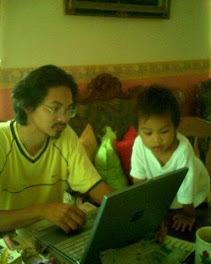There are quite a few books written on how to make money in the market. Some of them are even written by people who have made money as traders! What you don't see often, however, are books or articles written on how to lose money. “Cut your losers and let your winners run” is commonsensical advice, but how do you determine when a position is a loser? Interestingly, most traders I have seen don't formulate an answer to this question when they put on a position. They focus on the entry, but then don't have a clear sense of exit—especially if that exit is going to put them into the red.
One of the real culprits, I have to believe, is in the difficulty traders have in separating the reality of a losing trade from the psychological sense of feeling like a loser. At some level, many traders equate losing with being a loser. This frustrates them, depresses them, makes them anxious—in short, it interferes with their future decision-making, because their P & L is a blank check written against their self-esteem. Once a trader is self-focused and not market focused, distortions in decision-making are inevitable.
A particularly valuable section of the classic book Reminiscences of a Stock Operator describes Livermore 's approach to buying stock. He would sell a quantity and see how the stock responded. Then he would do that again and again, testing the underlying demand for the issue. When his sales could not push the market down, then he would move aggressively to the buy side and make his money.
What I loved about this methodology is that Livermore's losses were part of a grander plan. He wasn't just losing money; he was paying for information. If my maximum position size is ten contracts in the ES and I buy the highs of a range with a one-lot, expecting a breakout, I am testing the waters. While I am not potentially moving the market in the way that Livermore might have, I still have begun a test of my breakout hypothesis. I then watch carefully. How are the other averages behaving at the top ends of their range? How is the market absorbing the activity of sellers? Like any good scientist, I am gathering data to determine whether or not my hypothesis is supported.
Suppose the breakout does not materialize and the initial move above the range falls back into the range on some increased selling pressure. I take the loss on my one-lot, but then what happens from there?
The unsuccessful trader will respond with frustration: “Why do I always get caught buying the highs? I can't believe “they” ran the market against me! This market is impossible to trade.” Because of that frustration—and the associated self-focus—the unsuccessful trader does not take any information away from that trade.
In the Livermore mode, however, the successful trader will see the losing one-lot as part of a greater plan. Had the market broken nicely to the upside, he would have scaled into the long trade and likely made money. If the one-lot was a loser, he paid for the information that this is, at the very least, a range-bound market, and he might try to find a spot to reverse and go short in order to capitalize on a return to the bottom end of that range.
Look at it this way: If you put on a high probability trade and the trade fails to make you money, you have just paid for an important piece of information: The market is not behaving as it normally, historically does. If a robust piece of economic news that normally sends the dollar screaming higher fails to budge the currency and thwarts your purchase, you have just acquired a useful bit of information: There is an underlying lack of demand for dollars. That information might hold far more profit potential than the money lost in the initial trade.
I recently received a copy of an article from Futures Magazine on the retired trader Everett Klipp, who was dubbed the “Babe Ruth of the CBOT”. Klipp distinguished himself not only by his fifty-year track record of trading success on the floor, but also by his mentorship of over 100 traders. Speaking of his system of short-term trading, Klipp observed, “You have to love to lose money and hate to make money to be successful…It's against human nature what I teach and practice. You have to overcome your humanness.”
Klipp's system was quick to take profits (hence the idea of hating to make money), but even quicker to take losses (loving to lose money). Instead of viewing losses as a threat, Klipp treated them as an essential part of trading. Taking a small loss reinforces a trader's sense of discipline and control, he believed. Losses are not failures.
So here's a question I propose to all those who enter a high-probability trade: “What will tell me that my trade is wrong, and how could I use that information to subsequently profit?” If you're trading well, there are no losing trades: only trades that make money and trades that give you the information to make money later.
Brett N. Steenbarger, Ph.D. is Director of Trader Development for Kingstree Trading, LLC in Chicago and Clinical Associate Professor of Psychiatry and Behavioral Sciences at SUNY Upstate Medical University in Syracuse, NY. He is also an active trader and writes occasional feature articles on market psychology for a variety of publications. The author of The Psychology of Trading (Wiley; January, 2003), Dr. Steenbarger has published over 50 peer-reviewed articles and book chapters on short-term approaches to behavioral change. His new, co-edited book The Art and Science of Brief Therapy is a core curricular text in psychiatry training programs. Many of Dr. Steenbarger's articles and trading strategies are archived on his website, www.brettsteenbarger.com
source: fxpalace.com







